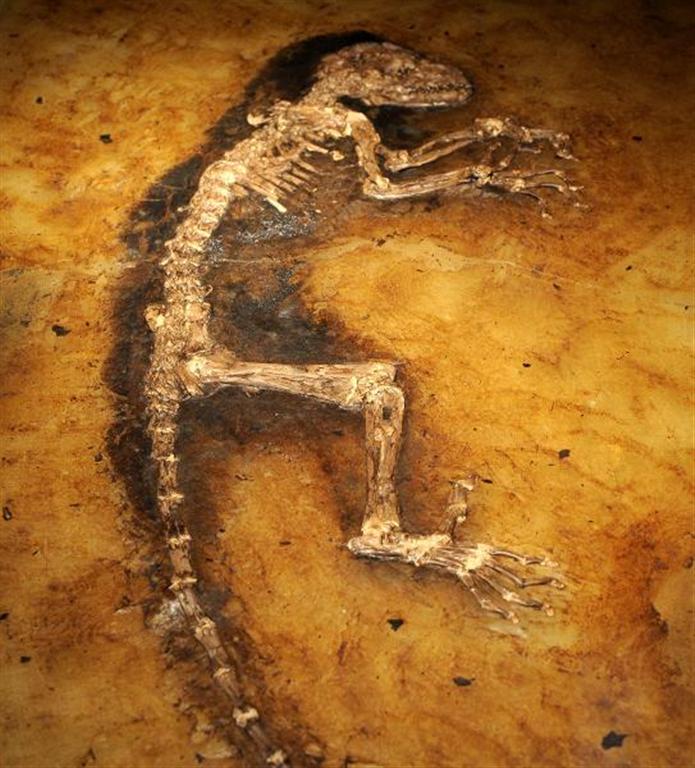Peer review or publicity; how to solve a problem like Ida.
Ida was no more than two feet in length, she had a cat-like face, a long tail and judging from the shape of her ankle, walked upright. Cladistic analysis might have suggested she was probably related to lemurs, but she was heralded as a missing link between other mammals to primates.
The issue raised by Dr Martin Whyte’s paper, entitled ‘Ida; new light on Palaentology’ , was not so much about the validity of these claims as by how scientific discovery should be publicized.
Ida was extracted from the Messl Lakes, fossil rich deposits of brown coal in Germany, and sold to a collector, who kept her in his private collection for 25 years before selling her on to the Museum of Oslo for a very large sum of money. To recoup their investment, the museum engaged a team of scientists to investigate her. They published their ‘findings’ in an on-line journal at the same time as the film and the book were released.
The publicity of findings in other sciences; physics, medicine and zoology, for example, depends on peer review and publication in reputable scientific journals. Some scientists and indeed some journals may wish to issue a press release on discoveries they think are particularly important, but for the most part, whether a finding is publicized is a matter of luck. Somehow, publicity is seen as pandering to commercialism. Science, like religion, is above all of that .
Palaentology is different. The commercial opportunities are too great. Fossils all too often find their way into the hands of illegal entrepreneurs who will prepare the specimens for collectors, who purchase them for large sums of money and may then, like the Oslo Museum, seek to recoup the scientific capital of the discovery. With so much money involved, the temptation for fraudulent claims, like the Piltdown hoax of the thirties, can be too great.
But publicity occurs in other branches of science too. How pervasive would the philosophy of Sigmund Freud had been without the efforts of his publicist, Dr Ernest Jones? And would we have been celebrating the bicentenary of Darwin’s birth this year were it not for his champion, Dr Thomas Huxley? All great discoveries need to be discovered by somebody who can get them into the public arena. Some scientists are also great self publicists. Among contemporary examples are Baroness Susan Greenfield, Lord Winston and Richard Dawkins. Never discount the role of PR and commerce in science, even though many scientists regard self publicists with envy and disdain and place their faith in the objectivity of peer review.
But peer review is never objective and cannot be considered a council of truth. Think of Dr Andrew Wakefield’s proposal of a link between MMR vaccine and autism. The data was seriously flawed but The Lancet still published it.
And peer review can be quite corrupt. Journals often ask authors to suggest their reviewers and, of course, they volunteer their friends. There are often just a few people around the world working on a given research topic. They have a self interest to ensure that their work is kept in the public eye and continues to attract funds. Scientists often come of unspoken agreement to support each other. Any interloper, whose work threatens to undermine this cosy arrangement, is likely to see their papers rejected for publication. Drug companies recruit teams of ‘independent’ opinion leaders to investigate their products. The results are nearly always presented in the best light for the company and supported through the peer review system by scientists working on the same drug. Nobody is keen to bite the hand that feeds them grants, sponsors their journals, underwrites their academic positions and arranges and pays for their attendance at key conferences. Having been invited on the international merry go round, scientists would do almost anything not to fall off it.
A few years ago, an eminent colleague of mine, Professor Juan Malagelada from Barcelona, proposed that given the exponential expansion of papers, everything should be published on the internet. Peer review by friends and other ‘interested’ groups, would be abolished and replaced by a much more open public review, similar to the reviews and critiques of new artistic works. In this way, he concluded, only the genuine and valuable would be quoted and rise to the surface – a kind of populist peer review. This system is would have its abuses, of course, the publicists would continue to push their own finds. Money would change hands as scientists would try to ensure their work gets maximum exposure.
So maybe it’s Palaentology that’s the missing link, sitting awkwardly between arts and sciences. As a science, Palaentology is underfunded; it needs museums and private investors to fund the field work and the high tech scientific analysis. New findings need hyperbole to excite interest in the area. In that regard, the subject is not unlike art critique. Indeed, many fossils are very beautiful. If Van Gogh had had to rely on peer review, his work would never had been discovered. He needed the support of his brother and friends to bring his paintings to public attention. In a similar way, The Museum of Oslo had to hype up Ida to get visitors though its doors and encourage other museums to spend large sums of money to loan the specimen. Peer review is too cautious and unlikely to excite public interest. On the other hand, the more the hype, the greater the risk of exposure. Public appraisal can turn on a sixpence!
Ida; New Light on Palaentology, was presented to the Chapel Allerton Cafe Scientifique by Dr Martin Whyte from Sheffield Univerisity on 22nd June.



